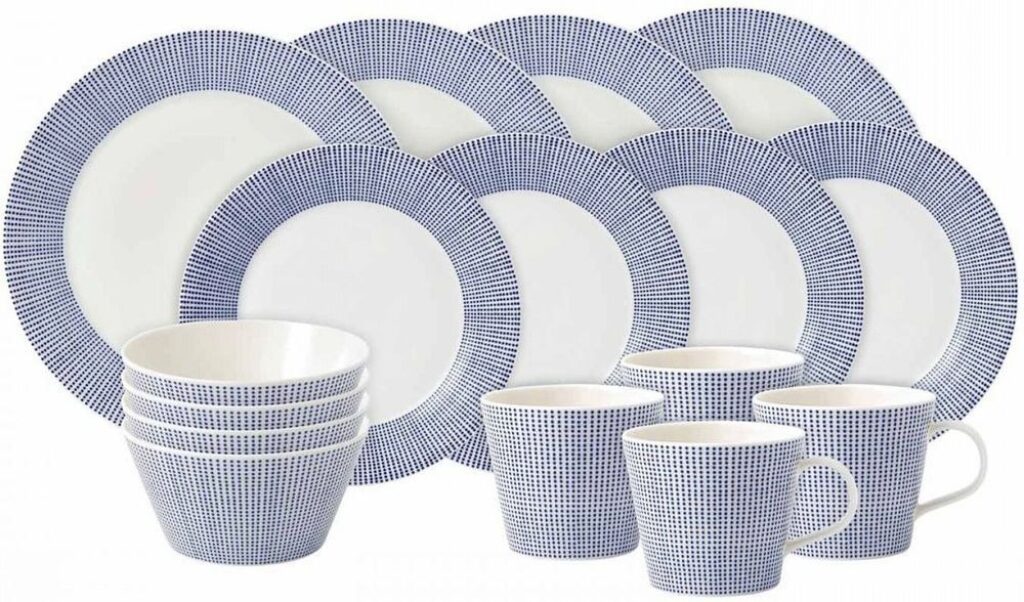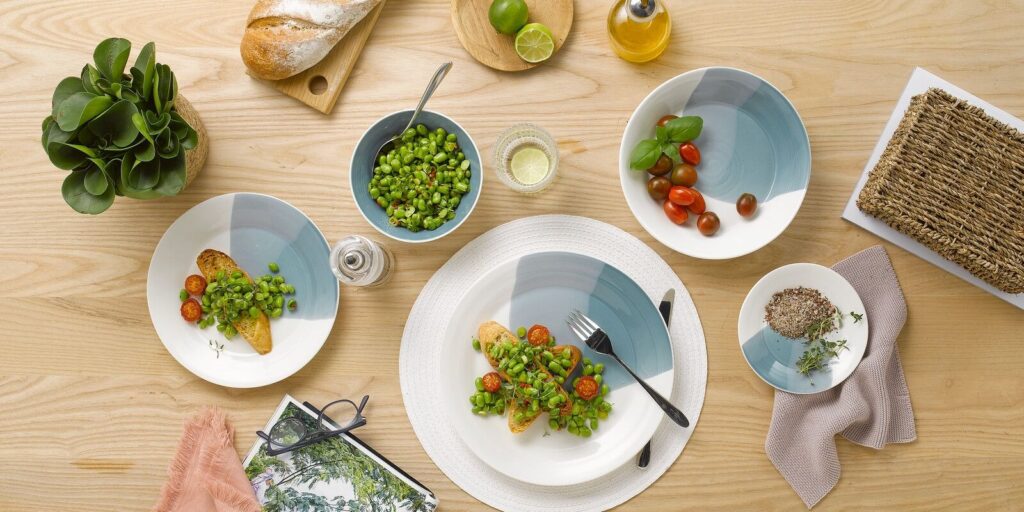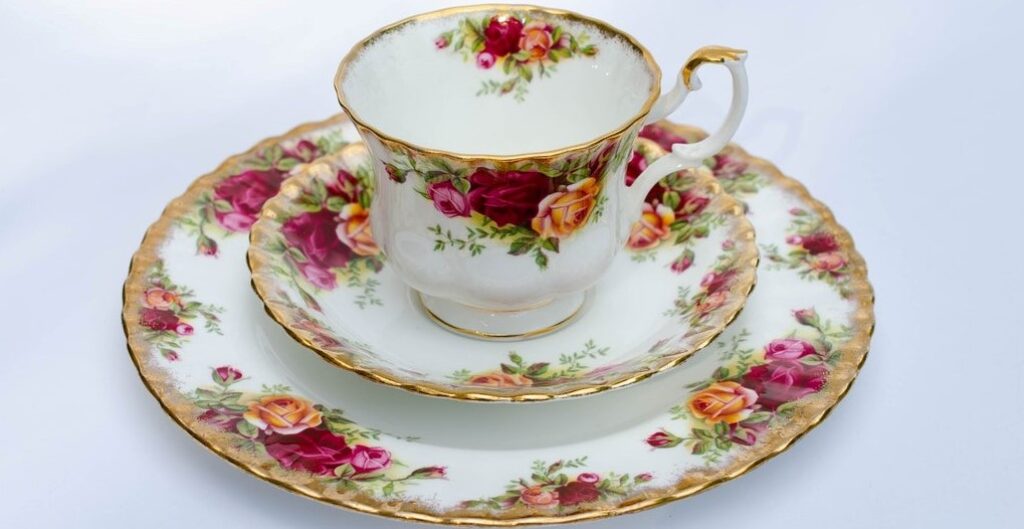Royal Doulton is a brand that has stood for quality and craftsmanship for over 200 years. His contribution to the tableware world is unparalleled, with a rich history of producing some of the most iconic and recognizable designs in the industry. From classic to contemporary, Royal Doulton has consistently evolved and adapted to the changing tastes and needs of its customers, cementing its status as a leader in the tableware market.
The classic designs

Royal Doulton’s earliest designs were heavily influenced by the dominant styles of the time, including the Neoclassical and Rococo movements. In the 19th century, the brand became known for its intricate hand-painted patterns, often featuring floral and botanical motifs. First introduced in the 18th century, the Blue Willow pattern remains one of Royal Doulton’s most popular designs to this day. The blue and white color scheme and ornate border are instantly recognizable and convey a sense of timeless elegance.
Another iconic Royal Doulton pattern is the “Old Country Roses” design, introduced in 1962. This pattern features a vibrant mix of red, pink and yellow roses on a white background, with gold accents adding a touch of luxury. It quickly became one of the brand’s best-selling patterns and has been a collector’s favorite ever since.
In addition to its traditional designs, Royal Doulton has also produced tableware in a range of other styles including Art Deco, Mid-Century Modern and even Pop Art. The “Tango” pattern, designed by Charles Noke in the 1930s, is a Prime example of Art Deco inspired crockery. A departure from the more traditional designs of the time, its bold geometric shapes and bright colors captured the zeitgeist.
The contemporary designs
While Royal Doulton’s classic designs remain popular, the brand has also embraced more modern styles in recent years. One of the most successful collaborations was with fashion designer Monique Lhuillier. Her “Arianne” pattern, launched in 2016, features delicate pink and gold floral motifs on a white background. The pattern has a modern, feminine feel that is in keeping with Lhuillier’s signature style.
Royal Doulton has also partnered with other contemporary designers and artists including Neil Faulkner and HemingwayDesign to create tableware that reflects current trends and styles. Designed by Faulkner, the 1815 collection is a nod to the brand’s heritage and features a mix of bold colors and modern shapes. Hemingway Design’s “Brights” collection, on the other hand, is a playful and colorful range of tableware perfect for informal dining.

The contemporary designs
While Royal Doulton’s classic designs remain popular, the brand has also embraced more modern styles in recent years. One of the most successful collaborations was with fashion designer Monique Lhuillier. Her “Arianne” pattern, launched in 2016, features delicate pink and gold floral motifs on a white background. The pattern has a modern, feminine feel that is in keeping with Lhuillier’s signature style.
Royal Doulton has also partnered with other contemporary designers and artists including Neil Faulkner and HemingwayDesign to create tableware that reflects current trends and styles. Designed by Faulkner, the 1815 collection is a nod to the brand’s heritage and features a mix of bold colors and modern shapes. Hemingway Design’s “Brights” collection, on the other hand, is a playful and colorful range of tableware perfect for informal dining.
The role of technology
Royal Doulton’s commitment to quality and innovation has been a driving force in its success. In recent years, the brand has invested heavily in new technologies to improve their manufacturing processes and create more intricate and detailed designs.
One of the most significant advances was the use of digital printing technology. This has enabled Royal Doulton to produce designs previously unattainable using traditional methods. Featuring a range of blue and white designs inspired by the sea, the ‘Pacific’ collection is a prime example of the brand’s use of digital printing. The intricate patterns and details would have been difficult to produce by hand, but the use of digital printing technology has allowed greater accuracy and consistency.
Another area where technology has had an impact is in the manufacture of bone china. Royal Doulton is known for its high quality bone china, prized for its translucency and durability. The use of modern manufacturing techniques has enabled the brand to produce bone china that is both stronger and thinner than ever before. This has resulted in a range of new designs that are more delicate and sophisticated, yet practical for everyday use.

conclusion
From the classic hand-painted patterns to the more contemporary collaborations with leading designers, Royal Doulton has made a significant contribution to the world of tableware. The brand has consistently adapted to changing tastes and trends while maintaining a commitment to quality and craftsmanship. Investing in new technologies has led to greater creativity and precision in the designs while preserving the essence of the heritage. Whether you prefer the traditional elegance of its classic designs or the modern flair of its contemporary collections, Royal Doulton’s tableware has something for everyone.



